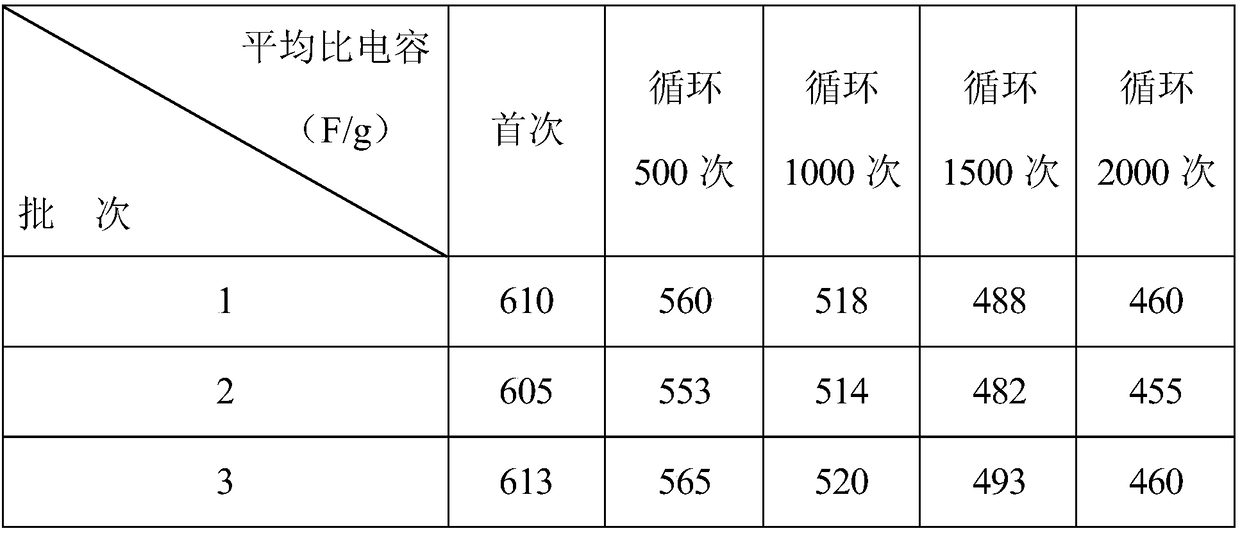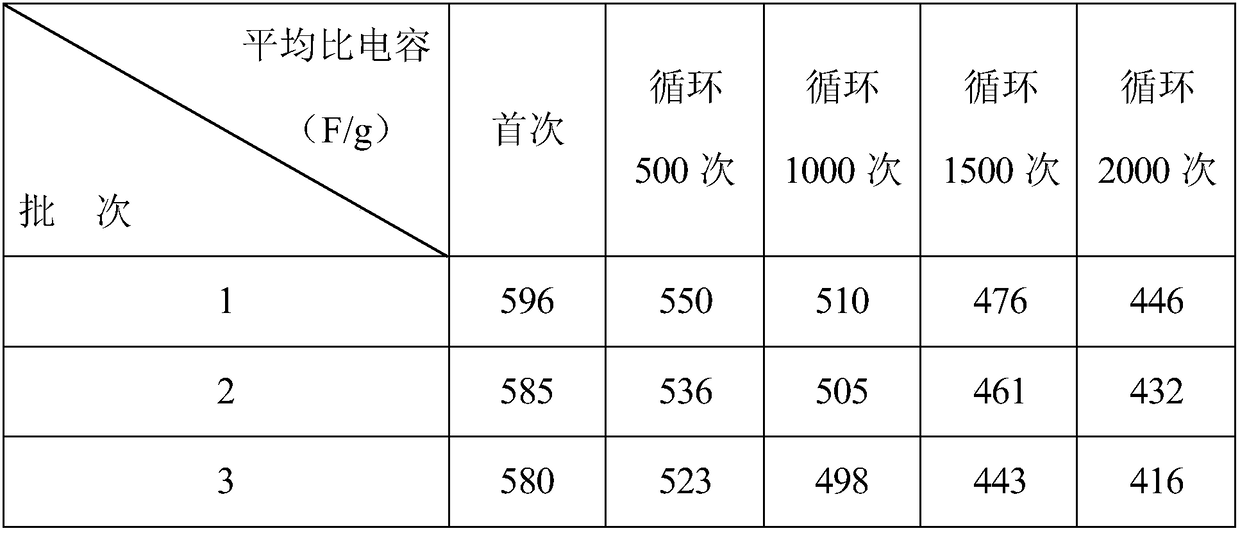Supercapacitor electrode material and preparation method thereof
A technology for supercapacitors and electrode materials, applied in the manufacture of hybrid capacitor electrodes, hybrid/electric double layer capacitors, etc., can solve the problems of small effective specific surface area, poor conductivity, insufficient energy density, etc., and achieve excellent cycle performance and good conductivity , the effect of large specific surface area
- Summary
- Abstract
- Description
- Claims
- Application Information
AI Technical Summary
Problems solved by technology
Method used
Image
Examples
Embodiment 1
[0018] 1) Using graphite oxide as a precursor, obtain single-layer graphene oxide by ultrasonic method and disperse it in deionized water, add MnCl 2 Ultrasonic stirring disperses evenly. Wherein the graphene oxide concentration is 2g / L; MnCl 2 The concentration is 3g / L.
[0019] 2) Add hydrazine hydrate with a volume ratio of 1 / 3 to the solution in step 1), and the hydrazine hydrate concentration is 26%.
[0020] 3) Pour the mixed solution in step 2) into a hydrothermal reaction kettle for hydrothermal reaction. The hydrothermal reaction temperature is 95° C., and the hydrothermal time is 20 h. ;
[0021] 4) Suction filtration, washing, and drying of the reaction product in step 3) to obtain graphene gel / MnO 2 Composite material, wherein the drying temperature is 70°C and the drying time is 9h.
[0022] The above graphene gel / MnO 2 After the composite material was uniformly mixed with SuperP and PVDF at a mass ratio of 30:2:1, a supercapacitor was fabricated with carbon...
Embodiment 2
[0026] 1) Using graphite oxide as a precursor, obtain single-layer graphene oxide by ultrasonic method and disperse it in deionized water, add MnCl 2 Ultrasonic stirring disperses evenly. Wherein the graphene oxide concentration is 2g / L; MnCl 2 The concentration is 1g / L.
[0027] 2) Add hydrazine hydrate with a volume ratio of 1 / 3 to the solution in step 1), and the hydrazine hydrate concentration is 20%.
[0028] 3) Pour the mixed solution in step 2) into a hydrothermal reaction kettle for hydrothermal reaction. The hydrothermal reaction temperature is 95° C., and the hydrothermal time is 20 h. ;
[0029] 4) Suction filtration, washing, and drying of the reaction product in step 3) to obtain graphene gel / MnO 2 Composite material, wherein the drying temperature is 70°C and the drying time is 9h.
[0030] The above graphene gel / MnO 2 After the composite material was uniformly mixed with SuperP and PVDF at a mass ratio of 30:2:1, a supercapacitor was fabricated with carbon...
Embodiment 3
[0034] 1) Using graphite oxide as a precursor, obtain single-layer graphene oxide by ultrasonic method and disperse it in deionized water, add MnCl 2 Ultrasonic stirring disperses evenly. Wherein the graphene oxide concentration is 2g / L; MnCl 2 The concentration is 5g / L.
[0035] 2) Add hydrazine hydrate with a volume ratio of 1 / 3 to the solution in step 1), and the hydrazine hydrate concentration is 30%.
[0036] 3) Pour the mixed solution in step 2) into a hydrothermal reaction kettle for hydrothermal reaction, the hydrothermal reaction temperature is 95°C, and the hydrothermal time is 20h. ;
[0037] 4) The reaction product in step 3) is suction filtered, washed and dried to obtain graphene gel / MnO 2 Composite material, wherein the drying temperature is 70°C and the drying time is 9h.
[0038] The above graphene gel / MnO 2 After the composite material was uniformly mixed with SuperP and PVDF at a mass ratio of 30:2:1, a supercapacitor was fabricated with carbon as a re...
PUM
 Login to View More
Login to View More Abstract
Description
Claims
Application Information
 Login to View More
Login to View More - Generate Ideas
- Intellectual Property
- Life Sciences
- Materials
- Tech Scout
- Unparalleled Data Quality
- Higher Quality Content
- 60% Fewer Hallucinations
Browse by: Latest US Patents, China's latest patents, Technical Efficacy Thesaurus, Application Domain, Technology Topic, Popular Technical Reports.
© 2025 PatSnap. All rights reserved.Legal|Privacy policy|Modern Slavery Act Transparency Statement|Sitemap|About US| Contact US: help@patsnap.com



